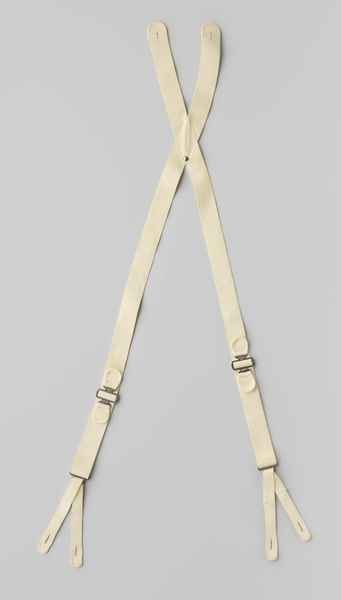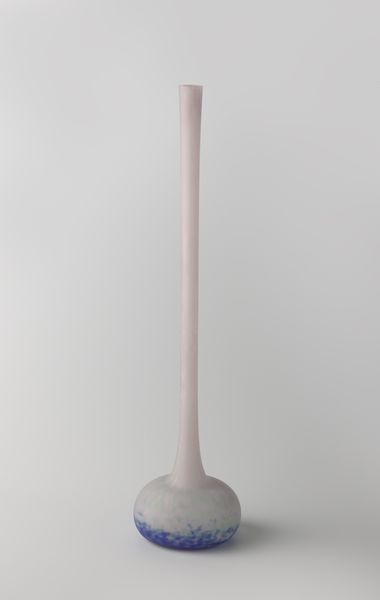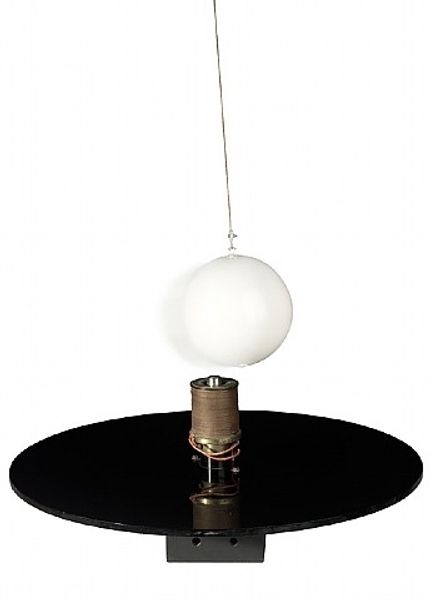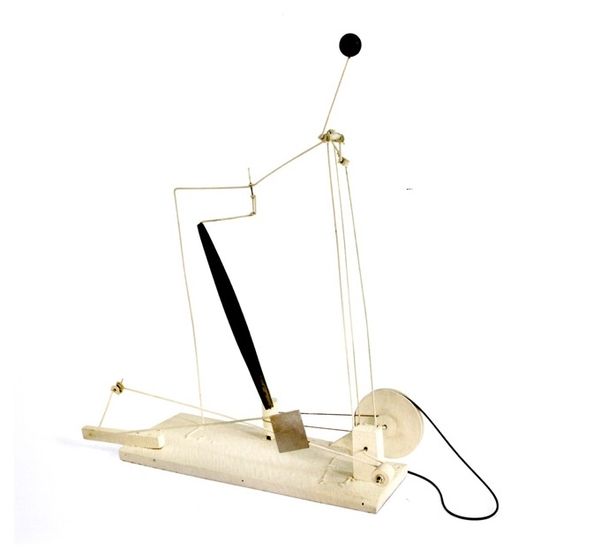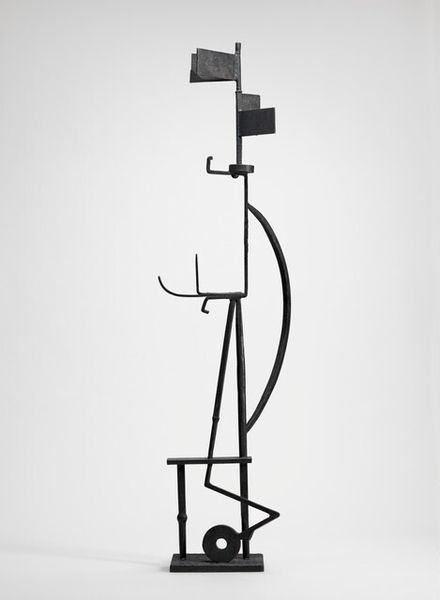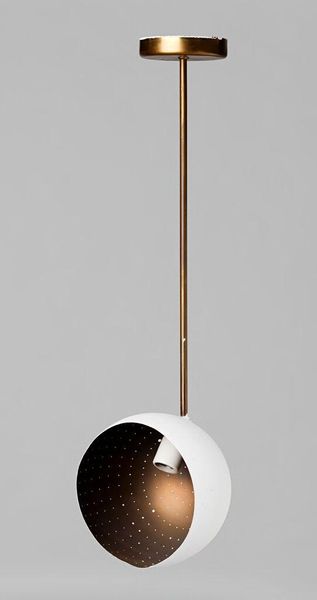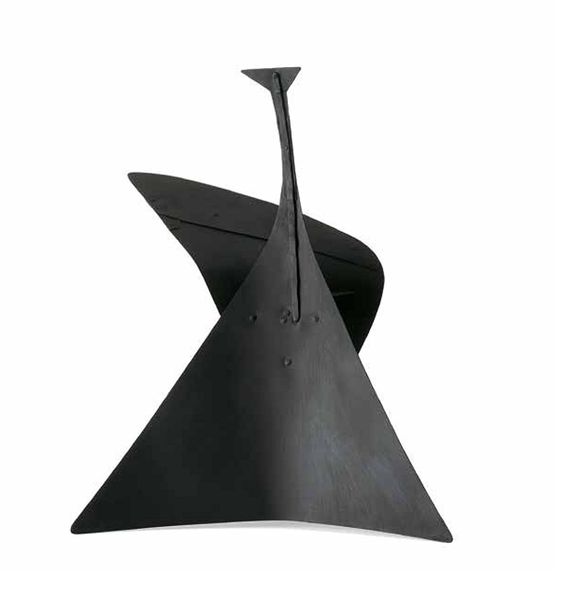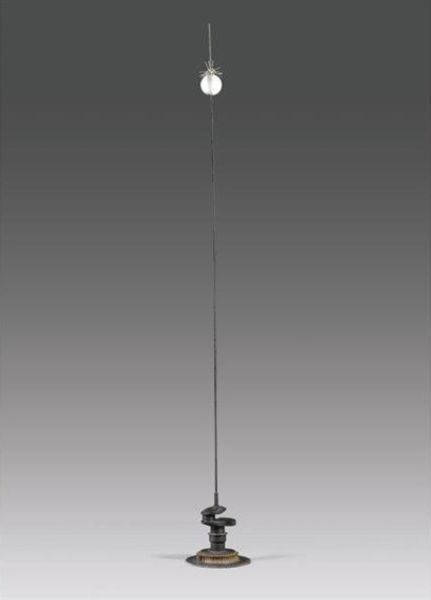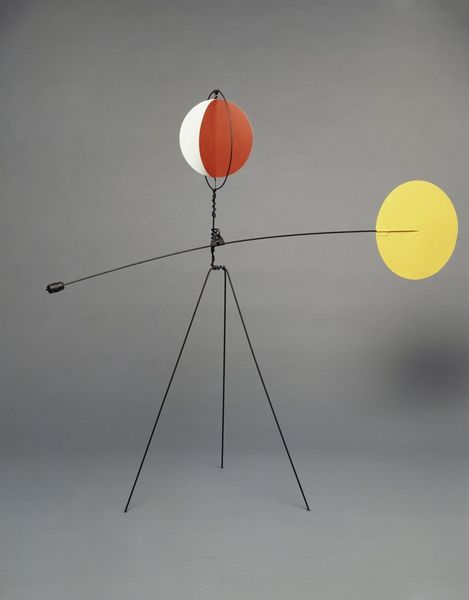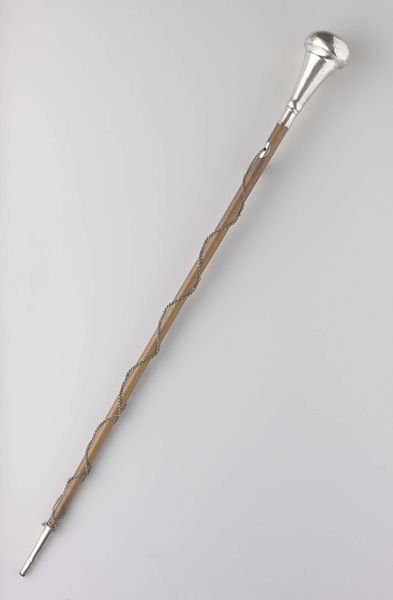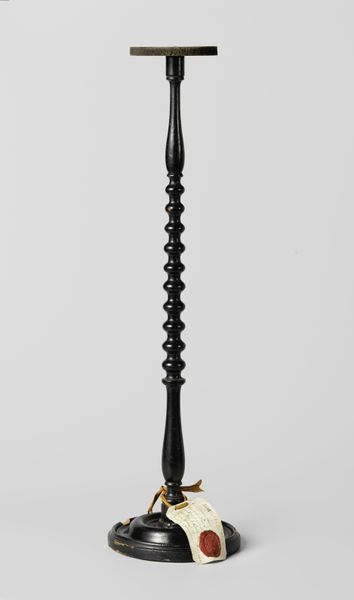
metal, sculpture, installation-art
#
clear focal point
#
clear graphic shape
#
3d printed part
#
minimalism
#
metal
#
white clean appearance
#
sculptural image
#
form
#
circular shape
#
3d shape
#
geometric
#
sculpture
#
white focal point
#
installation-art
#
round circular shape
#
cutout
#
modernism
Copyright: Nanda Vigo,Fair Use
Editor: Here we have Nanda Vigo's "Light Tree," created in 1985. It's a metallic sculpture, and its geometric shape gives me a sense of futuristic minimalism. What’s your interpretation of this work? Curator: Looking at "Light Tree," I'm drawn to consider the socio-political context of 1980s Italy. Vigo’s minimalist approach directly engages with earlier radical design movements. She pushes back by softening the edges of rigid industrial aesthetics that defined much of post-war production. Consider how the tree, as a metaphor, usually implies growth and organic structures. Editor: So, by calling it "Light Tree," is she perhaps commenting on the increasing artificiality of the environment? Curator: Exactly! Think about how this piece challenges traditional gender roles, too. Design at this time was very masculine-coded, right? With its sleek metal and precise geometry. Vigo subverts that by introducing the "tree" and that contrast speaks volumes about her feminist intervention in the design world. What do you think the metal tells us about the socio-economic landscape? Editor: I guess that the metallic components speak to the growing industrialization of society at that time. Curator: Yes, but it is also very polished and pristine. Remember that Vigo’s work consistently played with the idea of perception and illusion, blurring the boundaries between art and design. How might the lights influence your thinking? Editor: I think you’ve given me a whole new way to appreciate Vigo's work, not just as an aesthetic object, but as a commentary on gender, industrialisation, and the relationship between nature and artifice. Curator: Indeed! Art gives us these critical tools to deconstruct and reconstruct histories; even a seemingly simple design can hold so many layers of meaning!
Comments
No comments
Be the first to comment and join the conversation on the ultimate creative platform.
